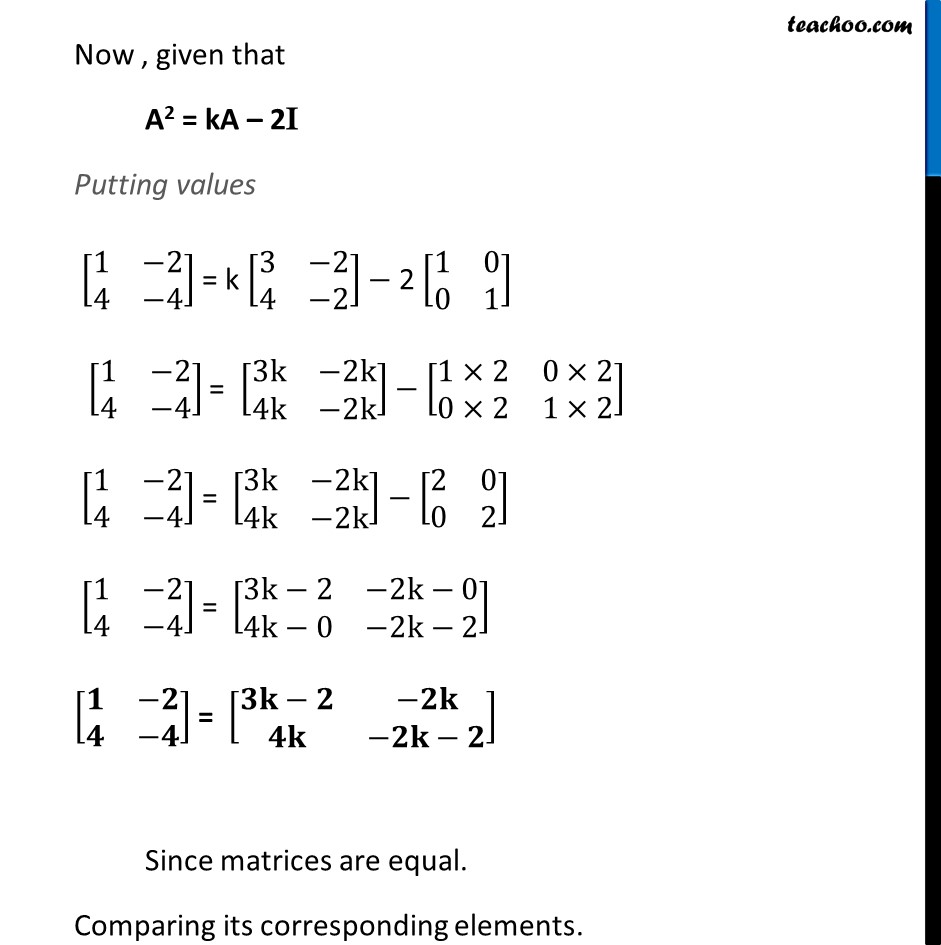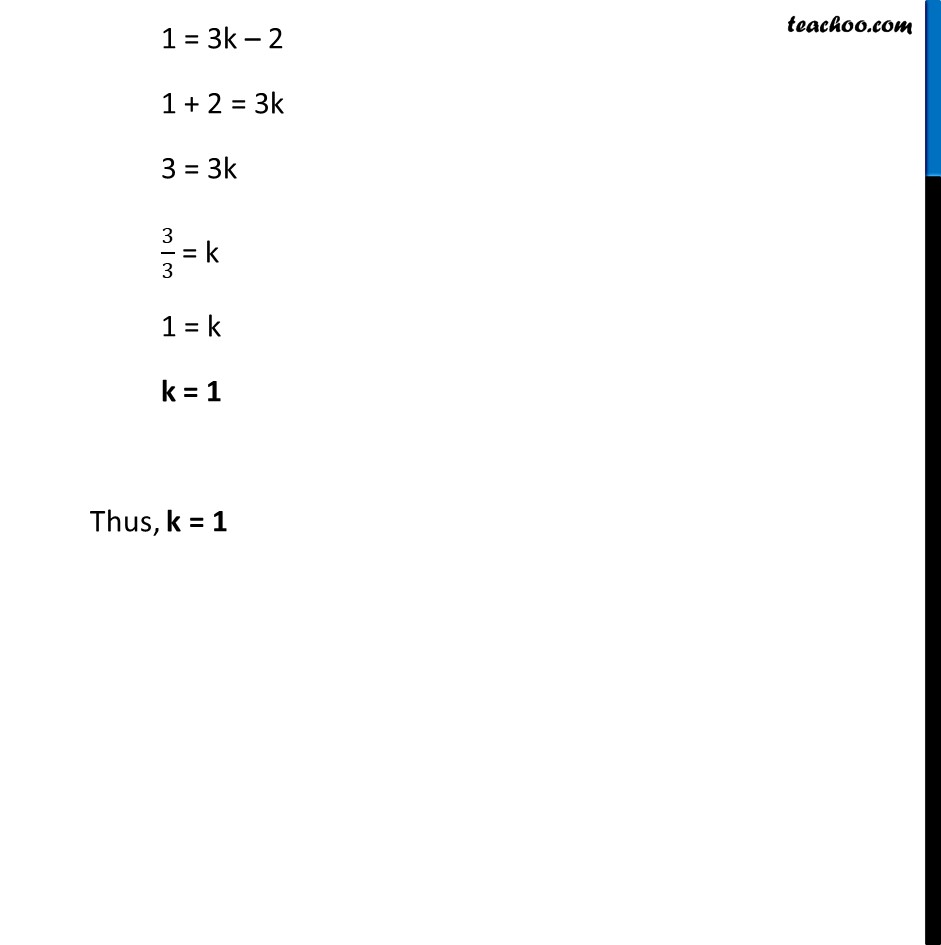


Chapter 3 Class 12 Matrices
Chapter 3 Class 12 Matrices
Last updated at Dec. 16, 2024 by Teachoo



Transcript
Ex 3.2, 17 If A = [■8(3&−2@4&−2)] and I= [■8(1&0@0&1)] , find k so that A2 = kA – 2I Finding A2 A2 = A × A = [■8(3&−2@4&−2)][■8(3&−2@4&−2)] = [■8(3(3)+(−2)(4)&3(−2)+(−2)(−2)@4(3)+(−2)(4)&4(−2)+(−2)(−2))] = [■8(9−8&−6+4@12−8&−8+4)] = [■8(𝟏&−𝟐@𝟒&−𝟒)] ∴ A2 = [■8(1&−2@4&−4)] Now , given that A2 = kA – 2I Putting values [■8(1&−2@4&−4)] = k [■8(3&−2@4&−2)] − 2 [■8(1&0@0&1)] [■8(1&−2@4&−4)] = [■8(3k&−2k@4k&−2k)] − [■8(1×2&0×2@0×2&1×2)] [■8(1&−2@4&−4)] = [■8(3k&−2k@4k&−2k)] − [■8(2&0@0&2)] [■8(1&−2@4&−4)] = [■8(3k−2&−2k−0@4k−0&−2k−2)] [■8(𝟏&−𝟐@𝟒&−𝟒)] = [■8(𝟑𝐤−𝟐&−𝟐𝐤@𝟒𝐤&−𝟐𝐤−𝟐)] Since matrices are equal. Comparing its corresponding elements. 1 = 3k – 2 1 + 2 = 3k 3 = 3k 3/3 = k 1 = k k = 1 Thus, k = 1